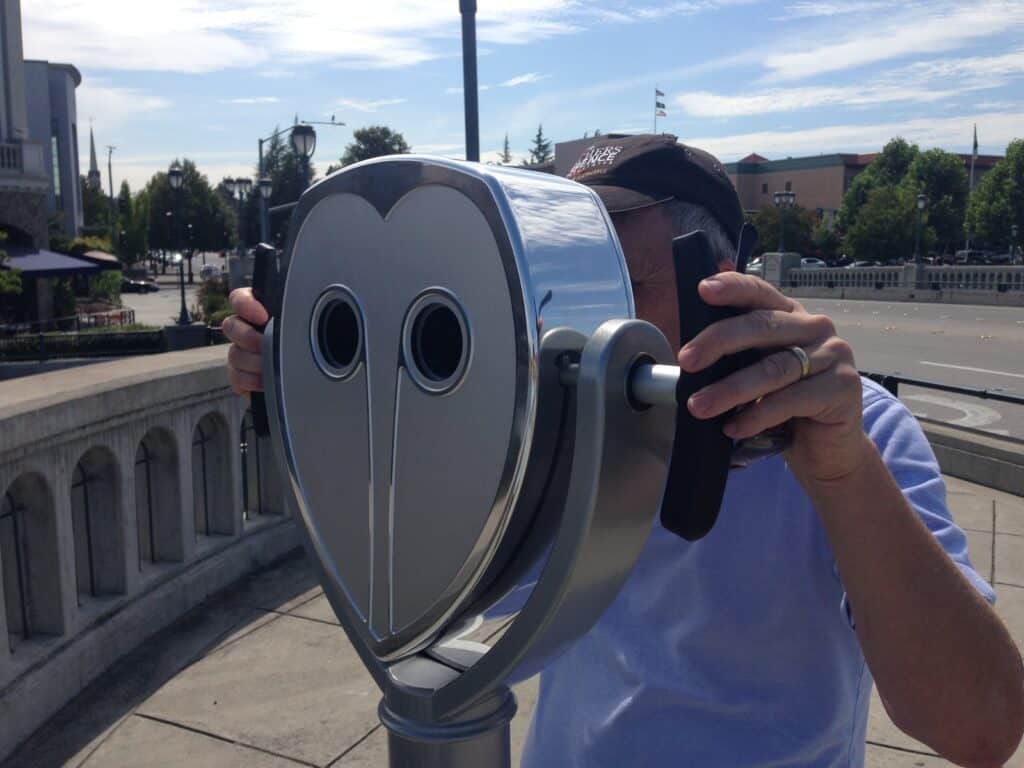Community members, business owners and municipal leaders all have an important role to play in responding to sea level rise and other climate impacts. What are the best ways to engage each of these groups in identifying the challenges and advancing solutions to this shared problem?Climate Access, in partnership with the County of Marin, San Francisco-based Owlized and Stanford researcher Dr. Susanne Moser, have launched a project that seeks to find an answer.
One of the key barriers to action on climate change is that its risks don’t seem immediate and urgent to most people. Here. Now. Us. combines cutting-edge technology, scientific data and innovative engagement techniques to bring sea level rise data to life, enabling community members to be part of decision making processes that help Marin County prepare for climate impacts and build stronger, more resilient communities. By offering a clearer view of how rising waters will affect the places that community members of Marin County live in and love, Here. Now. Us. is helping people better understand local climate impacts and the different ways they can choose to respond.
How it works
Beginning in May 2015, two OWL digital viewfinders – a device modeled after the classic coin-operated binoculars commonly found at scenic viewpoints – will be installed on the multi-use pathway in Mill Valley, Marin County. The viewfinders have been modernized with a virtual reality function and loaded with projection data from several leading sources that allows passersby to witness current and future sea level rise impacts the surrounding area. For instance, how would the spot you’re standing in look different with an additional three feet of water on top of it? The viewer goes one step further by presenting what two different responses to sea level rise could look like, visualizing a future community that has adapted to a changing climate and learned to live with water.
Research has shown that in the early stages of environmental education, hands-on experiences enabled by tools like the Owl viewfinders are critical. Its 3D visualizations help viewers understand how familiar places where community members live and work are being affected by climate change now, bringing these impacts closer to home and hopefully motivating people to get involved in climate adaptation and response efforts across the county.
This experience isn’t limited to those passing by the Miller Ave location. The Here. Now. Us. project website features the Owl viewfinder’s same 360-degree visualizations that allow visitors to visualize sea level rise impacts in Richardson Bay, as well as possible responses. For those motivated to take action to prepare and protect their community, the website outlines several ways community members can get involved, including signing up for updates and registering to participate in a community dialogue. Survey questions featured on the website, and during the viewfinder experience, are also an important bridge to the project’s research component.
Research to guide the field
Here. Now. Us. is also a research project that aims to uncover new approaches to building support for climate action that could guide the efforts of other coastal communities to prepare for and reduce the risks of sea level rise. Led by Dr. Susi Moser of Stanford University, PhD candidate Christa Daniels of Antioch University and Cara Pike of Climate Access, the research component of the project will explore and release findings on the use of visualization to motivate action on climate change.
Even before its launch, Here. Now. Us. has attracted media attention, including coverage in the Marin Independent Journal, Greenbiz, Bay Area radio stations, and Triple Pundit. Climate Access will be reporting back to its members over the course of the 12-week project, so stay tuned for learnings from this groundbreaking engagement project.
Here. Now. Us. is funded by the Federal Emergency Management Agency (FEMA) Region IX and Autodesk. Advisors on the project are; Frank Niepold, Climate Education Coordinator at the National Oceanic and Atmospheric Administration’s (NOAA) Climate Program Office; Heidi Nutters, Coastal Training Program Coordinator at San Francisco Bay National Estuarine Research Reserve; and Tristan Randall, Special Projects Executive at Autodesk.
To find out more about this project, contact Climate Access info@climateaccess.org



